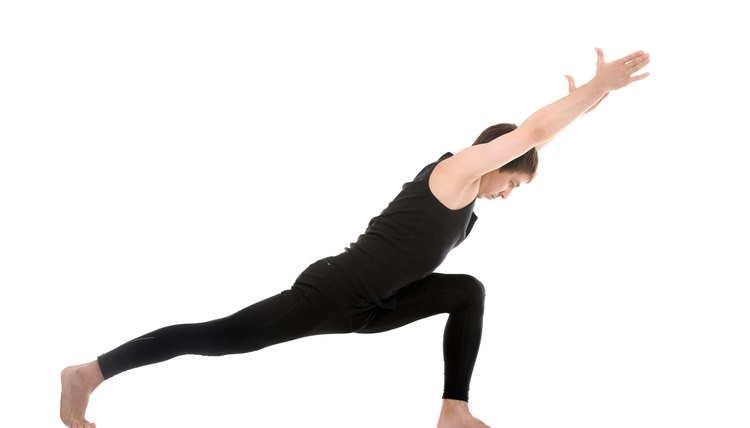Workouts for the Inguinal Ligaments

The inguinal ligament is a strong, fibrous band of connective tissue that runs from the base of your pubic region to the upper crest of your pelvis. It connects the connective tissues in your upper thigh to your torso and hip. Because this ligament is connected to other muscle groups and fasciae, you cannot isolate it from other groups when you exercise. Therefore, your workouts to strengthen the inguinal ligament should incorporate your entire body, suggests the National Academy of Sports Medicine.
Supine Active Frog Stretch
This exercise rotates your hip joints internally and externally while moving your inguinal ligaments. Lie on the ground on your back with your feet and knees together and your arms out to your sides. Lower your knees out to your sides and bring the soles of your feet together until you feel a stretch in your inner thighs. Hold this position for one deep breath and bring your knees and feet back to the starting position. Perform two sets of 10 to 12 reps.
Hip-Flexor Stretch with Shoulder Flexion
This exercise stretches your hip flexors and inguinal ligaments while extending the connective tissues and muscles in your abs and back. Stand with your right foot behind you and with both feet pointing forward. Lace your fingers together with your hands facing you and raise your arms over your head so your head is between your arms. Tighten your right buttock, and hold the stretch for five to six deep breaths. Switch the leg position and repeat the stretch twice on each hip.
Overhead Lunges
Lunges increase strength in your hip and legs while stabilizing your inguinal ligaments and other hip and leg ligaments. Stand with your feet together and step forward with your right foot. Lunge straight down until your left knee gently touches the ground and raise your left arm over your head to stretch the anterior fasciae in your torso and hip. Exhale and step back to the starting position. Perform two to three sets of six to eight reps per side.
This exercise provides similar benefits as the lunge except that you are moving from a low position to a higher position. Stand in front of a sturdy platform, such as a stack of aerobic steps or picnic bench, that is 2 to 3 feet high. Step on top of the platform with your left foot and push yourself up onto it. Do not hunch your spine or shoulders as you move. Extend your right leg behind you when you are on top of the platform and hold this position for two seconds. Return to the starting position and perform two to three sets of six to eight reps per leg.
References
- NASM Essentials of Personal Fitness Training; Michael Clark
- Low Back Disorders; Stuart McGill
Writer Bio
Nick Ng has been writing fitness articles since 2003, focusing on injury prevention and exercise strategies. He has covered health for "MiaBella" magazine. Ng received his Bachelor of Arts in communications from San Diego State University in 2001 and has been a certified fitness coach with the National Academy of Sports Medicine since 2002.
